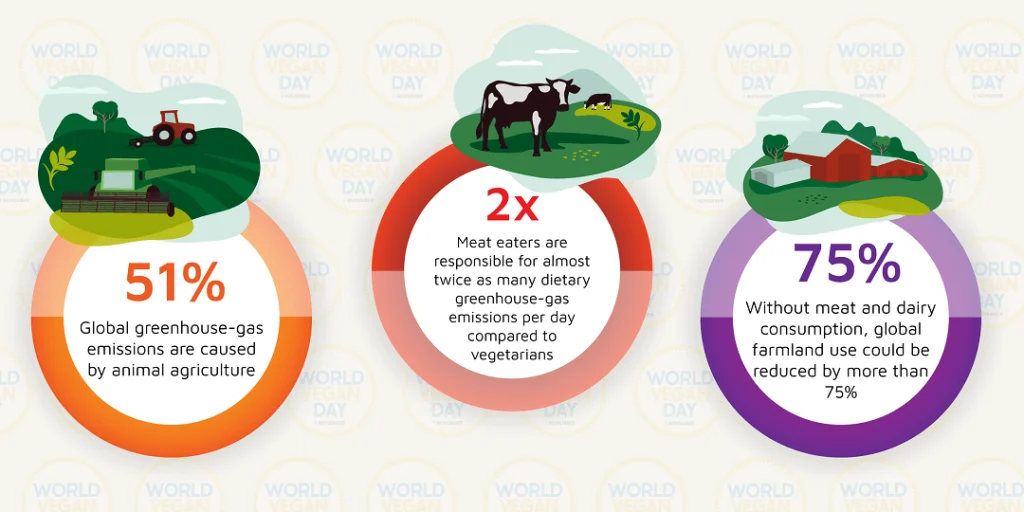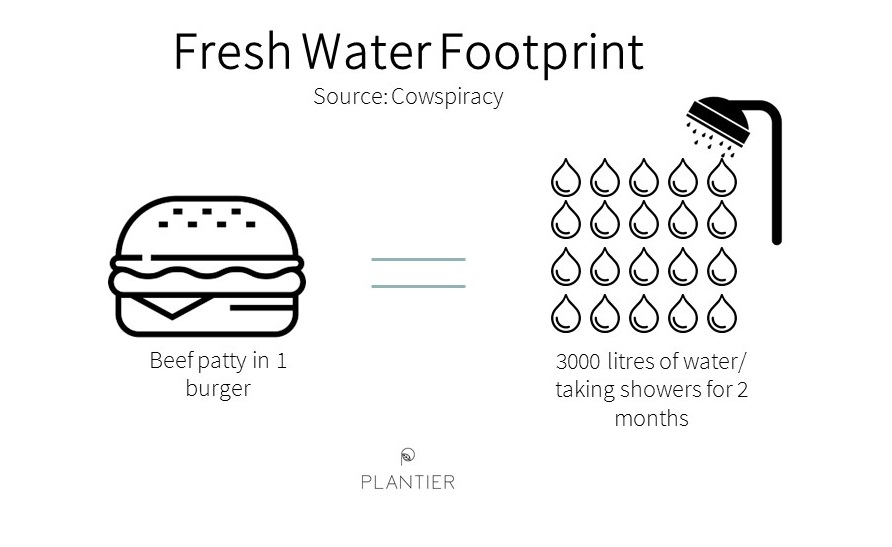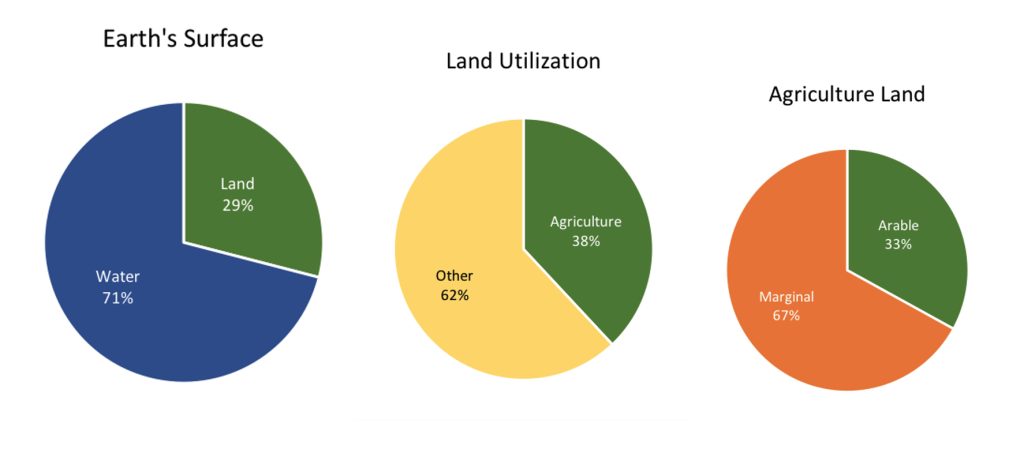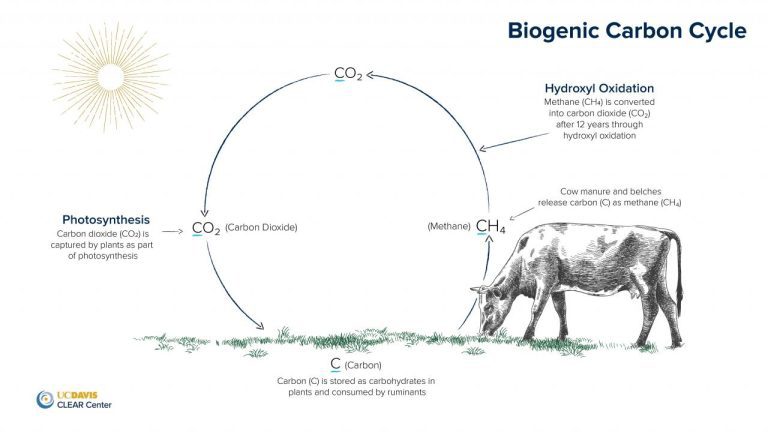Debunking Vegan Environmental Arguments: Why Veganism Is Not Better for the Environment
In this post we will summarize the most common environmental arguments associated with the vegan diet, and briefly give the other side of the coin, which is rarely talked about. We will be debunking vegan environmental arguments in this post, briefly, and in future posts more granular and deeply.
Veganism is often promoted as the environmentally responsible choice, with advocates claiming that going vegan will “save the world” from the oncoming climate disaster. However, how much of this is true, and how much of this is simply incoherent ramblings by ignoramuses?
These common environmental vegan arguments do not hold up to scrutiny. Unfortunately, for the vegans, this results in one of the major arguments for the diet disappearing, just like their invitation to the neighborhood BBQ.
1. The Greenhouse Gas Emissions from the Meat Industry
One of the primary arguments that vegans claim is that meat is responsible for an excessive and extremely large part of the greenhouse gas(GHG) emissions in our society. Is this true? How large part of the emissions are the meat-industry responsible for? Would these emissions be much lower if a large portion of society went vegan? These are questions that we will answer in a future post, but we will briefly examine it here.
The Claim:
Vegan advocates often state that livestock, especially cattle, are responsible for a significant portion of greenhouse gas emissions, contributing to climate change through methane production and Co2 emissions.

Why This Argument is Weak:
- Methane’s Short Atmospheric Lifespan: While methane is indeed a potent greenhouse gas, it has a relatively short lifespan in the atmosphere, approximately 7-12 years. This is significantly shorter than carbon dioxide, which can last in the atmosphere for over a century. This means that the impact of methane is often overstated, especially if livestock populations remain stable (NASA; EPA).
- Carbon Sequestration in Grasslands: Livestock, when managed through regenerative agricultural practices, can actually help sequester carbon in the soil. Grasslands, where cattle graze, have the potential to act as carbon sinks, offsetting some of the methane emissions attributed to livestock (Rodale Institute).
2. Water Usage in Meat Production
Another common environmental argument for veganism is that producing meat, particularly beef, consumes vast amounts of water, which could be better used for other purposes. Yet again, this is a clear misrepresentation of the actual facts and closer to a disinformation campaign than anything resembling the truth.

The Claim:
Vegan proponents claim that it takes thousands of liters of water to produce just one kilogram of beef, suggesting that a vegan diet is much more water-efficient.
Why This Argument is Weak:
- Green Water vs. Blue Water: Much of the water used in beef production is “green water,” which refers to rainwater that falls on pasturelands. This water would fall on the land whether or not cattle are grazing there. The argument often fails to differentiate between green water and “blue water,” which is water sourced from rivers, lakes, and aquifers that is critical for human consumption and irrigation (Rotz, et al., 2019).
- Water Usage of Plant-Based Alternatives: Crops like almonds and avocados, which are staples in many vegan diets, require significant amounts of blue water, often in areas like California and South America where water scarcity is a serious issue. The production of these crops can strain local water resources just as much, if not more, than meat production. The reality is that it takes less “blue water” to produce 1 kg of beef than it takes to produce 1 kg of avocados, walnuts, almonds or sugar. Meat takes 3% blue water to produce, while almonds takes 51% blue water. A single California almond takes 6L of blue water. That is water ready for human consumption. (Fulton, et al., 2019; Water Footprint Network).
3. Deforestation and the Destruction of Environments
Land use and deforestation are often cited by vegans as reasons to eliminate meat from our diets, arguing that meat production requires vast amounts of land and leads to deforestation, particularly in places like the Amazon.
The Claim:
Vegan advocates claim that meat production leads to deforestation, particularly in tropical regions like the Amazon, to make room for cattle ranching.
Why This Argument is Weak:
- Soy Farming and Deforestation: Soy production is one of the primary drivers for deforestation in the Amazon rainforest. Vegans falsely claim that most of the soy is produced for animal consumption, when this is false and a mischaracterization. To reach this claim they use almost nonsensical metrics like weight. Considering the animals eat the parts of the soy plant which ways the most, and humans cannot eat, this skews the truth. 86% of what animals eat are inedible for humans. (European Commission; Mottet, et al., 2017).
- Land Efficiency of Mixed Farming Systems: Integrated farming systems that combine crops and livestock can actually use land more efficiently, reducing the need for additional deforestation. Sustainable livestock practices can be part of a balanced agricultural system that minimizes environmental impact (dos Reis, et al., 2021).
4. Biodiversity Loss Due to Animal Agriculture
The loss of biodiversity due to animal agriculture is a key point of contention among environmentalists who advocate for veganism. They argue that grazing and livestock production lead to significant biodiversity loss.
The Claim:
Vegan proponents argue that animal agriculture leads to habitat destruction and overgrazing, which in turn causes significant biodiversity loss.
Why This Argument is Weak:
- Monoculture Farming: The shift toward large-scale monoculture farming of crops to support vegan diets is more threatening to biodiversity than animal agriculture. Crops like soy and corn, often used in vegan products, are typically grown in monocultures, which deplete soil nutrients and harm local ecosystems (A. Suarez, W. Gwozdz, 2023).
- Regenerative Practices: Sustainable livestock practices, such as rotational grazing, can actually enhance biodiversity and improve soil health. These methods can counteract some of the negative impacts associated with conventional animal farming, making livestock production less harmful to biodiversity than large-scale monoculture farming (C. LaCanne, J. Lundgren, 2018).
5. Energy Efficiency and Resource Use
Vegan advocates often argue that producing plant-based foods is more energy-efficient than producing animal products, making veganism the more sustainable option.
The Claim:
It is often claimed that producing plant-based foods requires less energy and fewer resources than producing animal products, making it a more efficient and sustainable option.
Why This Argument is Weak:
- Nutrient Density vs. Caloric Efficiency: While plant-based foods may require less energy to produce per calorie, they are less nutrient-dense compared to animal products. This means that more plant-based food must be consumed to meet the same nutritional needs, offsetting the perceived energy savings. Humans can live and thrive off of only animal products, if they also eat organ meats, while the same cannot be said for consumption of only vegetables and/or fruits (F. Leroy et al., 2023)
- Energy Use in Food Transportation: Many plant-based foods, especially those that are out of season or not locally grown, are imported from distant locations. This increases their carbon footprint due to transportation, particularly when considering the global supply chains that make these foods available year-round (C. Weber, H. S. Matthews, 2008).
6. Excessive Land Use
Vegans often claim that animal agriculture uses an excessive and inappropriate amount of land that could otherwise be used more efficiently for crop production to feed more people. This argument is often presented as a key reason why adopting a vegan diet is better for the environment and food security.

The Claim:
It is often claimed that animal agriculture and farming use an unsustainable amount of land that could be better utilized for growing crops to feed the global population. This argument assumes that all agricultural land is equally viable for crop production and that transitioning from livestock to crops would be both possible and beneficial.
Why This Argument is Weak:
- Arable vs. Marginal Land: Not all farmland is created equal. Arable land is land that can be used for growing crops, while marginal land is typically unsuitable for crops due to environmental factors. Marginal land can be effectively used for grazing animals, which in turn can help improve the land over time through natural fertilization and land management practices. The argument that animal agriculture is wasteful because it uses land that could grow crops fails to account for the fact that much of this land is marginal and cannot support crop production. Therefore, grazing animals on this land is actually an efficient use of resources (UC Davis).
- Soil Health and Regeneration: Grazing animals can contribute positively to soil health through natural processes such as the breakdown of organic matter and the recycling of nutrients. This can lead to the regeneration of soil on marginal lands, making these areas more productive and environmentally sustainable in the long run (R. Teague, U. Kreuter, 2020).
- Food Production Efficiency: Animal agriculture on marginal land contributes to the overall food system by producing high-quality protein and other nutrients that would be difficult to obtain from plant-based sources grown on these lands. Therefore, the use of marginal land for grazing livestock actually complements the use of arable land for crops, rather than competing with it.
Conclusion
The purpose of this post is to list and critically examine the common environmental arguments made in favor of veganism. While veganism is often presented as the environmentally conscious and superior lifestyle, the arguments supporting this claim are not as robust as they appear. When examined critically, many of these arguments rely on oversimplifications, disinformation, and misinterpretations. Meat production, especially when managed sustainably, can have a much smaller environmental footprint than commonly believed, and certain plant-based alternatives may have a devastating impact on local biodiversity.
As consumers, it is essential to critically evaluate the environmental impact of our dietary choices rather than accepting broad claims at face value. In our upcoming posts, we will delve deeper into each of these environmental arguments, exploring specific case studies and evidence to provide a more balanced perspective on the environmental impacts of veganism versus omnivorous diets.
We must remember that animals upcycle nutrient-absent food like cereal, grains and parts of the soy plant we cannot even digest, to create the most nutrient-dense food available, meat. This makes animals, and animal agriculture, a vital sector for optimal human life and sustenance.
For more on this topic, you may want to revisit our earlier posts on Critical Thinking and the Problem of Faux Intellectual Authorities and Why The Arguments for Veganism Are Weak.


